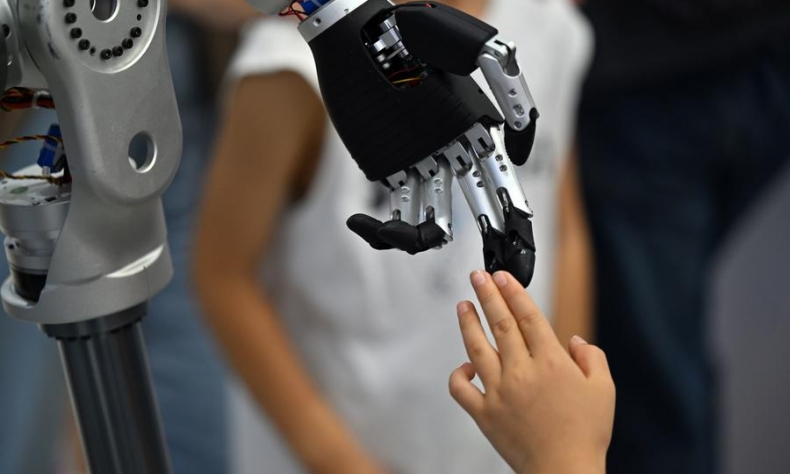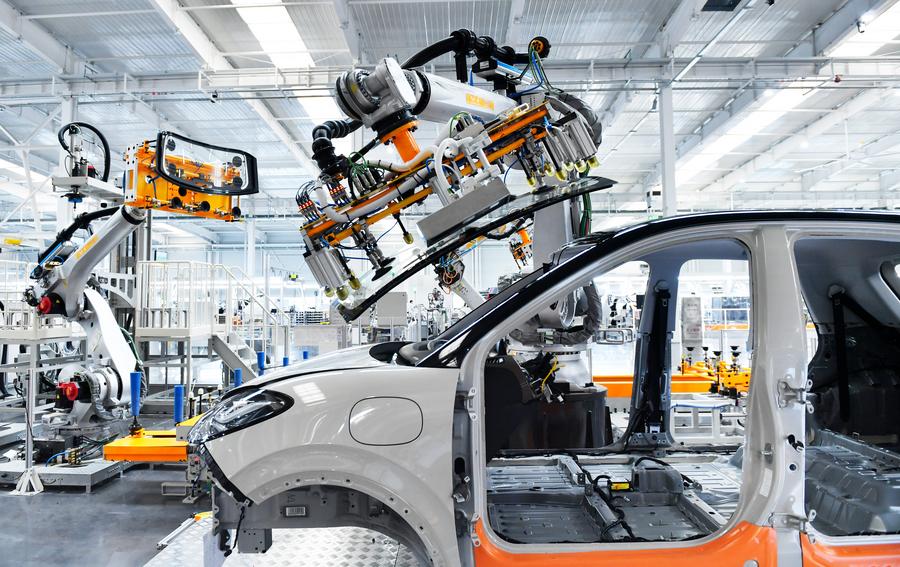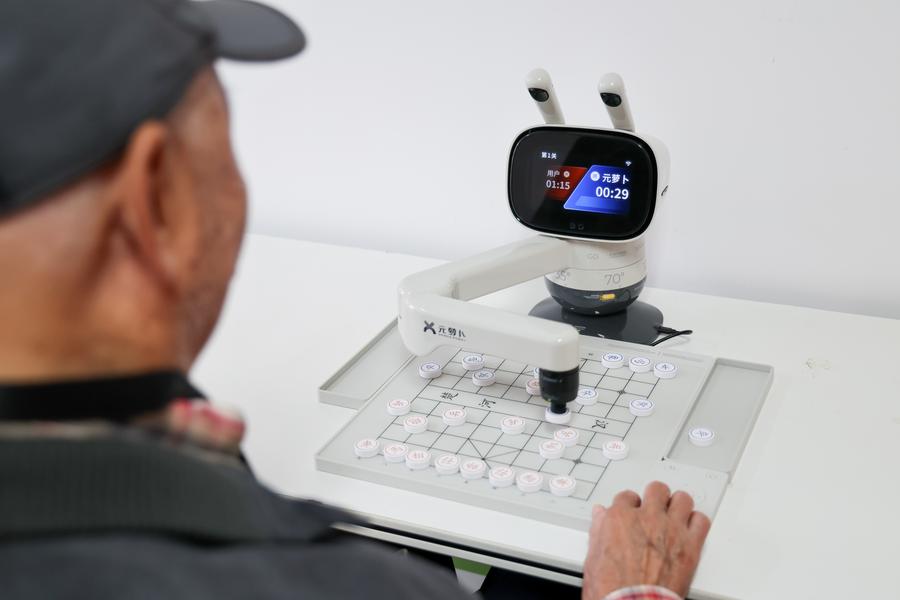Ethical Reflections

Development of embodied intelligence has aroused concerns about safety risks, emotional ethics, and socio-cultural implications.
Rapid technological advancements are driving embodied intelligent robots from laboratories to real-life applications to serve as a key force reshaping the future way of life. Like many other revolutionary technologies, while sparking utopian visions of the future, the development of embodied intelligence has aroused concerns about safety risks, emotional ethics, and socio-cultural implications.
Will robots replace humans?
As embodied intelligence technology matures, human labor in repetitive and routine jobs will bear the brunt of the impact.
In the manufacturing sector, robots can efficiently perform tasks such as component assembly and welding with high precision and uninterrupted operation. For instance, in automobile manufacturing plants, assembly processes that used to require extensive human labor have now been largely replaced by automated robotic systems, forcing many assembly line workers to confront the reality of job displacement.
“Embodied intelligent robots may replace human workers in some roles, but they will never replace humans completely,” said Wang Tianmiao, honorary director of the Robotics Institute at Beihang University. He noted that the first jobs to be replaced will be those that are tedious, repetitive, monotonous, or hazardous. But this does not mean humans will face widespread unemployment, because the rise of artificial intelligence (AI) has also created countless new opportunities in emerging fields.
Take manufacturing as an example. While robots take over repetitive tasks like assembly and welding, reducing the need for manual labor, demands for jobs related to robot development, maintenance, and programming will increase dramatically. Engineers specializing in optimizing algorithms and performance of robots and technicians engaged in ensuring stable operation and timely maintenance of the robots will be in great need.
This trend is irreversible. Industry experts suggest certain workers better adapt to changes in the employment market through career transformation. Workers must upgrade their skills to transition into roles involving technical R&D, equipment maintenance, or positions requiring high creativity and emotional intelligence. Meanwhile, governments and businesses should invest more in vocational training and offer diverse and targeted upskilling programs to help traditional “blue-collar” workers become “new-collar” workers or knowledge-based professionals.

Making robots safe and reliable
The complexity and autonomy of embodied intelligent robots will likely pose various safety risks, making their precision and controllability a critical ethical consideration.
Li Muyuan, a researcher at the Electronic Information Research Institute of the China Center for Information Industry Development, called for attention to four safety risks that might be posed by embodied intelligent robots: First, physical safety risks. The physical movements and operations of robots may cause harm to humans or the environment. Second, data and cybersecurity risks. The data collected and processed by robots may be illegally accessed or exploited. Third, decision-making and control risks. Autonomous decisions and actions by robots may lead to unforeseen harmful consequences. Fourth, ethical and legal risks. Robot behavior may trigger ethical controversies and legal liabilities.
To ensure embodied intelligent robots are safe and controllable, Li stressed the need to integrate safety principles and control mechanisms throughout the entire lifecycle of robot development, production, and application. Additionally, clarifying the boundaries of responsibility among stakeholders is also crucial. Mature safety management practices can serve as references to explore governance frameworks tailored to the application of robots in different fields.
Currently, laws and regulations concerning embodied intelligent robots are still in their infancy, with great gaps and ambiguities remaining. Establishing comprehensive and detailed legal standards to guide the R&D, production, and application of robots is an urgent priority.
Li suggested adoption of a tiered and classified approach in relevant legislation, applying differentiated management measures based on the risk levels of robots. Furthermore, laws must be flexible enough to allow for technological innovation while standardizing robot development.
Emotional support
Since human habitats are designed to accommodate human dimensions, embodied intelligent robots are often designed like humans to fit the space and serve as companions or caregivers. Industry insiders predict that humanoid robots, particularly those programmed to care for the elderly and provide companionship, will become commonplace in households in years to come.
“It looks like emotional interaction between humans and robots will become the norm in future smart society,” said Liu Yongmou, a professor at the School of Philosophy at Renmin University of China.
Liu noted that the enormous market demand for companion robots is built on their versatile functionality. First, companion robots will become increasingly lifelike and can be customized to replicate a real person. Second, they can handle household chores, drive cars, and mow lawns, serving as perfect domestic helpers. Third, they can meet their owners’ various emotional needs, particularly alleviating loneliness among the elderly living alone. They can chat and play with users and accompany them on trips, social gatherings, and exercises. Lastly, they will also be able to function as smart assistants, answering questions, gathering information, and planning vacations.

Interacting with robots designed to offer emotional guidance and support requires shifts in human attitudes, Liu opined. “Undoubtedly, more and more people will embrace robots,” he said. “The development of AI will fuel the revival of animism, and humans will become more tolerant of some concepts including their attitudes towards love. Robots will no longer be mere tools for labor but will play active roles in social interactions, engaging in diverse emotional interactions with humans.”
A humanistic examination of robotic emotions and AI companionship is not about opposing technological progress, but rather about guiding AI development in a human-centric direction, Liu explained.
Should robots be granted rights?
As embodied intelligent robots become increasingly smart—capable of performing complex, high-precision tasks and providing emotional comfort and support for humans—a host of intricate ethical questions will arise such as whether these robots should be granted certain rights.
“Currently, embodied intelligent robots remain tools designed and used by humans, eligible to possess rights according to traditional ethical theories,” Li Muyuan said. “However, as their intelligence continues to evolve, their legal status may need to be reexamined in the future. For now, establishing safety control mechanisms for embodied intelligent robots is more pressing.”
According to Zhang Weimin, a professor at Beijing Institute of Technology and chairman of Beijing Polytechnic Huahui Technology Co., Ltd., embodied intelligent robots could be granted rights, provided they do not threaten human safety. Ensuring their controllability and reliability requires humans to establish and adhere to rules for robot design, production, and application.
Zhang argued that the “Three Laws of Robotics” devised by science fiction author Isaac Asimov could serve as a valuable reference: First, a robot may not injure a human being, or, through inaction, allow a human being to come to harm. Second, a robot must obey the orders given it by human beings, except where such orders would conflict with the First Law. Third, a robot must protect its own existence, except where such protection would conflict with the First or Second Law.
Some industry insiders have pointed out that granting rights to robots would raise ethical, legal, and social issues. Questions like how to define the scope and boundaries of robot rights and how to balance them with the interests of humans will require continuous and in-depth reflection for years to come.
 Facebook
Facebook
 Twitter
Twitter
 Linkedin
Linkedin
 Google +
Google +










